Homs – Khalid Ibn al-Walid Mosque حمص – مسجد خالد ابن الوليد
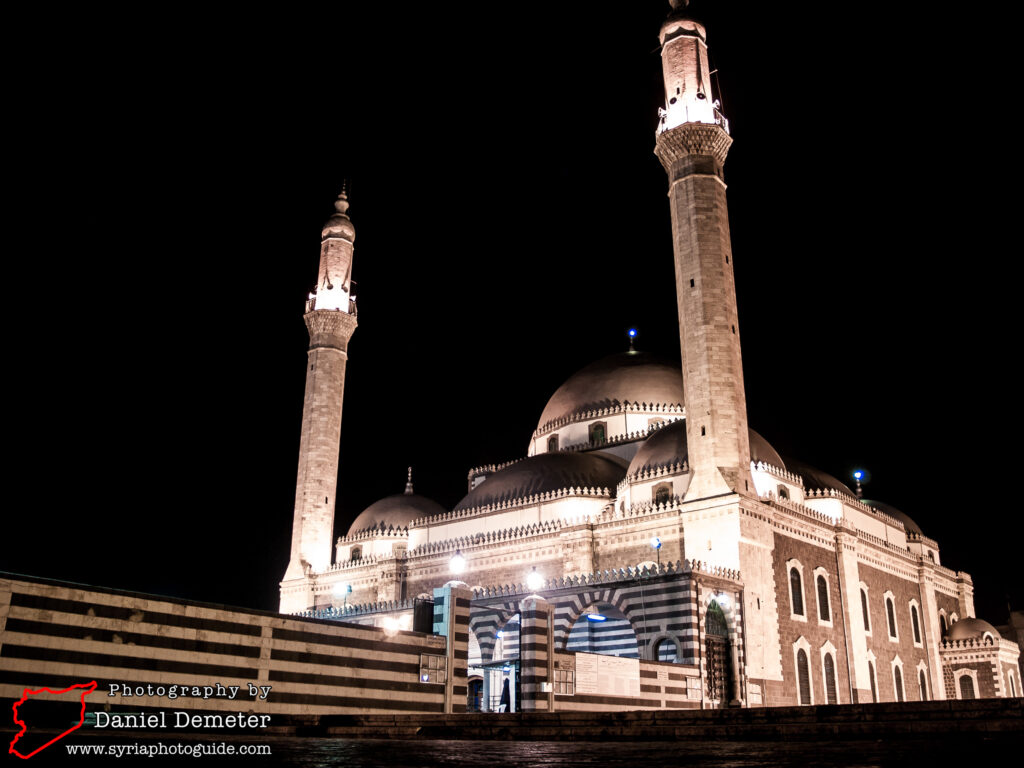
The Ottoman-era Khalid Ibn al-Walid Mosque (مسجد خالد ابن الوليد) is perhaps the most famous monument in the city of Homs (حمص). It houses the tomb of Khalid Ibn al-Walid (خالد ابن الوليد), one of the companions of Mohammed (محمد) and one of the most important commanders of early Muslim armies. Khalid Ibn al-Walid (خالد ابن الوليد) was born in Mecca (modern Saudi Arabia) in 592 and died in Homs (حمص) in 642. He was responsible for conquering much of modern-day Syria for Muslim forces, as well as winning substantial military victories in Arabia and along the Euphrates river in modern Iraq. These victories were widely attributed to the military tactics and strategies developed by him.
The site of Khalid Ibn al-Walid Mosque (مسجد خالد ابن الوليد) was originally a cemetery, with a small mosque constructed next to the tomb in the late 7th century. In 1265, during the Mamluk period, a larger mosque was constructed at the site. That mosque remained standing until the Ottoman governor Nazim Hussein Pasha ordered its demolition to begin construction of the present-day mosque, which itself is fairly modern. While the mosque was built between 1908 and 1913, the interior tomb dates back to the 11th century. The much older sarcophagus that contained the body of Khalid Ibn al-Walid (خالد ابن الوليد) was moved to the National Museum (المتحف الوطني) in Damascus (دمشق).
Khalid Ibn al-Walid Mosque (مسجد خالد ابن الوليد) follows the typical Ottoman plan with a large courtyard and fountain to the north of the prayer hall. There are two thin octagonal minarets on the northwest and northeast corners of the mosque built with white limestone. The facade of the entrance features alternating horizontal bands of white limestone and black basaltic stone, while the remaining exterior walls are mostly black basalt. The prayer hall is covered by a large central dome supported by four massive columns, and there are eight smaller domes surrounding it. The tomb is in the northwest corner of the prayer hall. The mosque is generally open at all times throughout the day, from the first morning prayer until the final evening prayer. Khalid Ibn al-Walid Mosque (مسجد خالد ابن الوليد) suffered significant damage during 2012-2014 fighting, however, and will be in need of substantial repairs in the coming years.
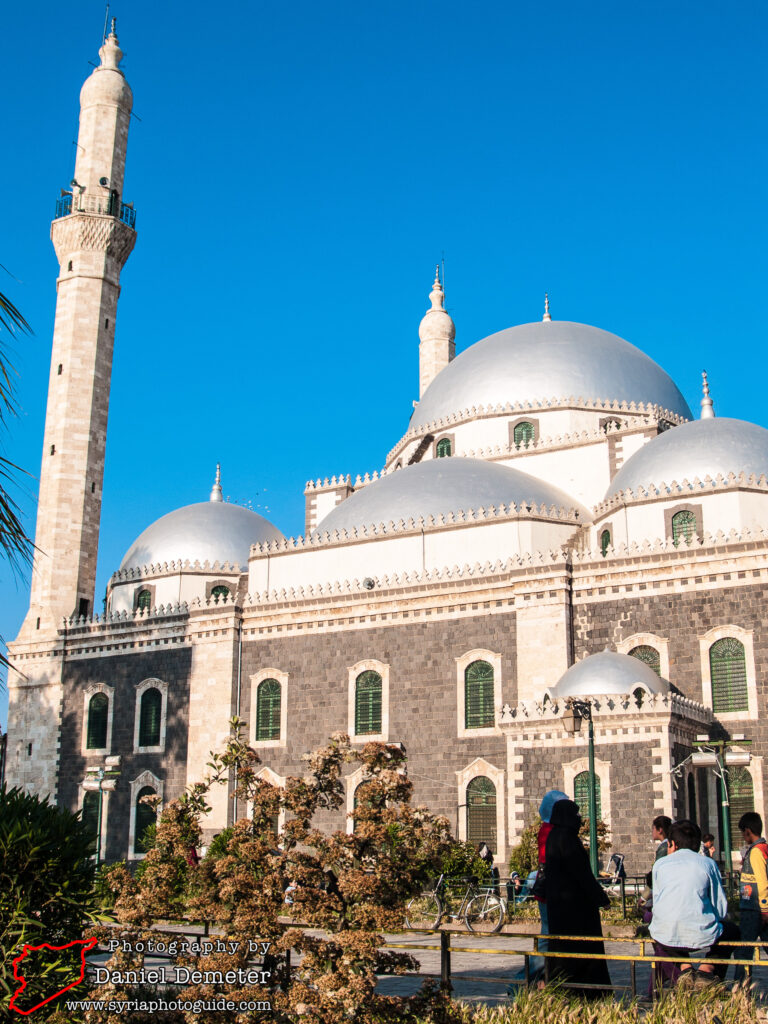
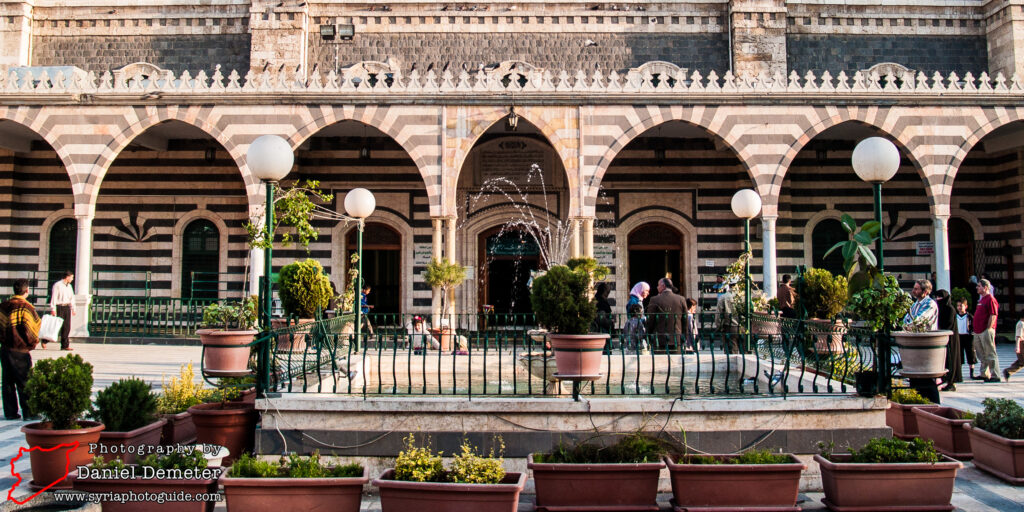
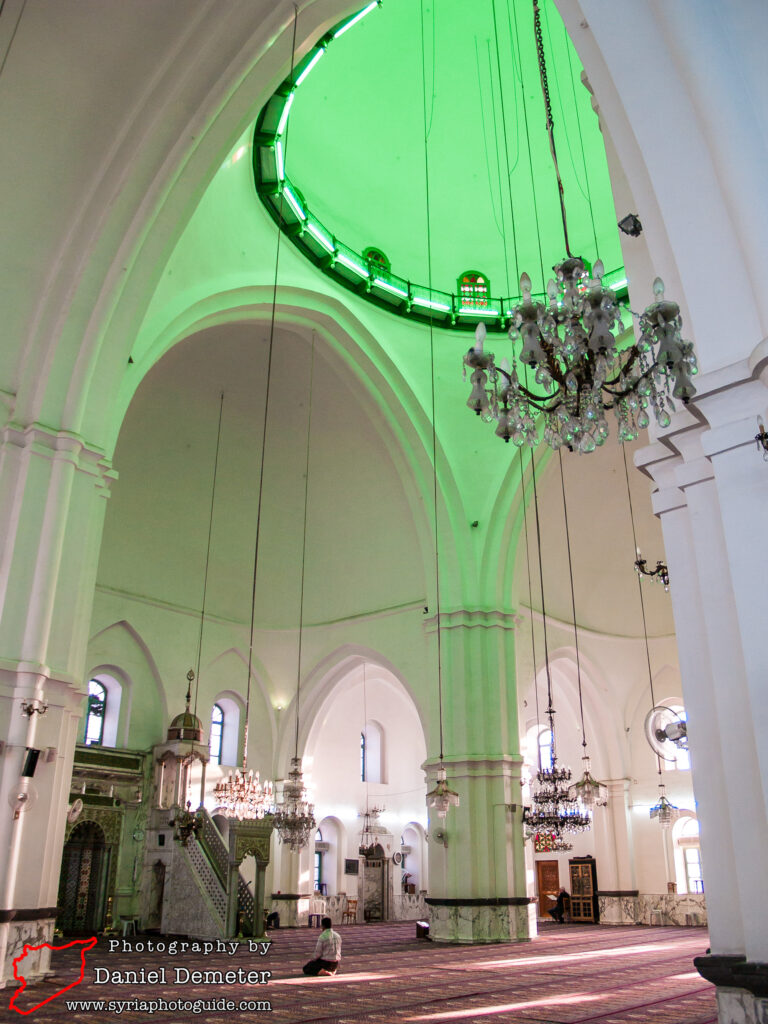
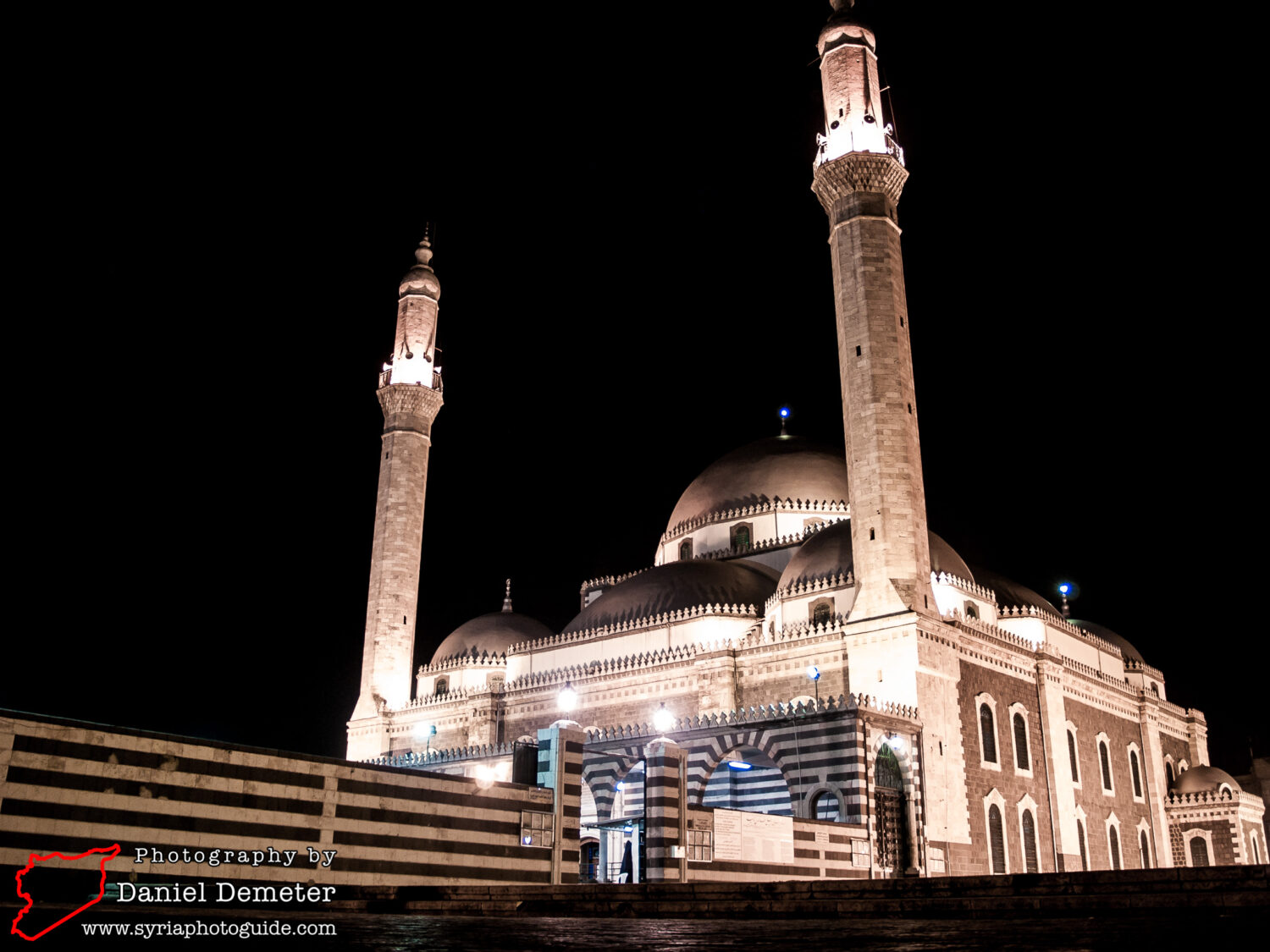
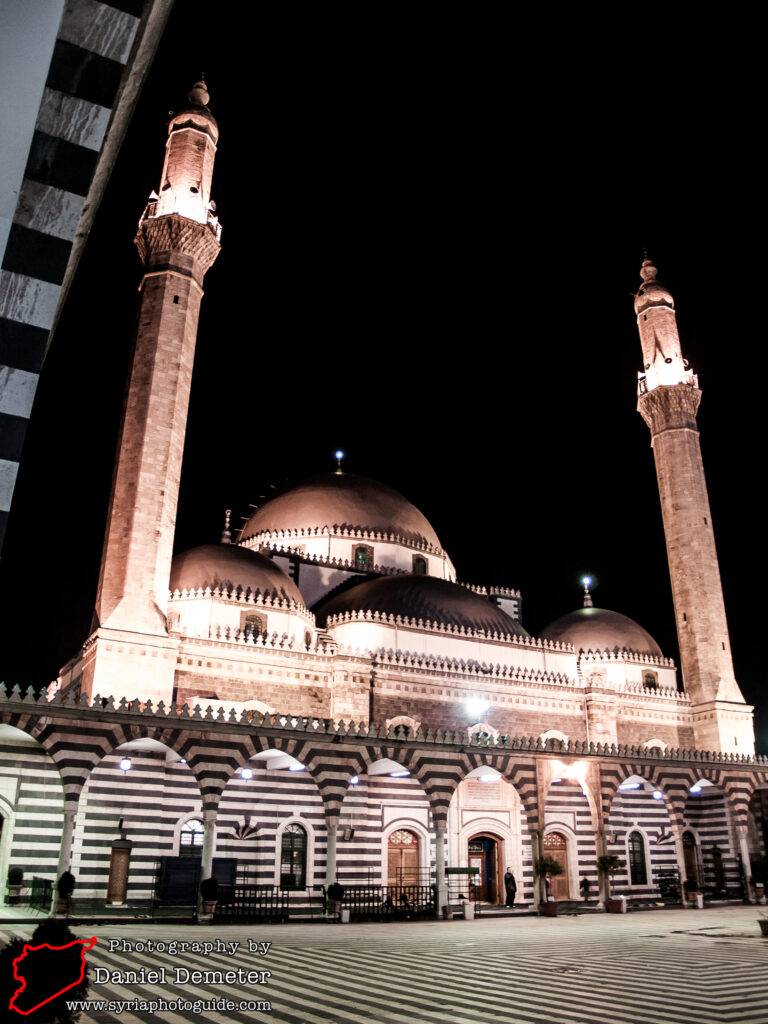
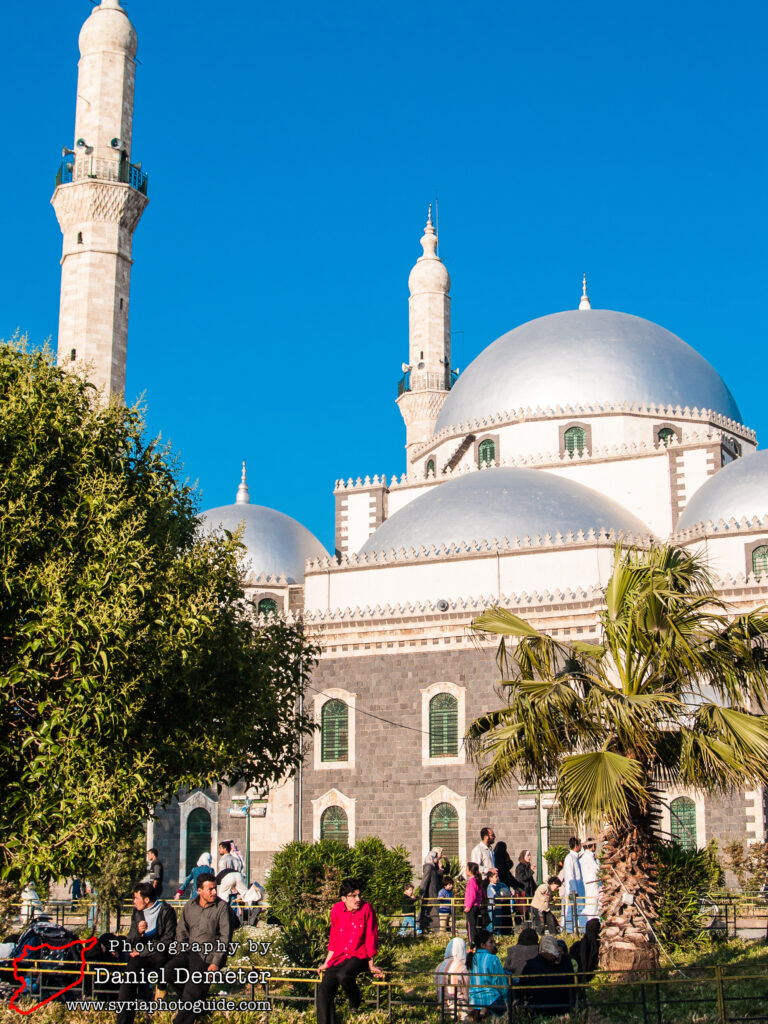
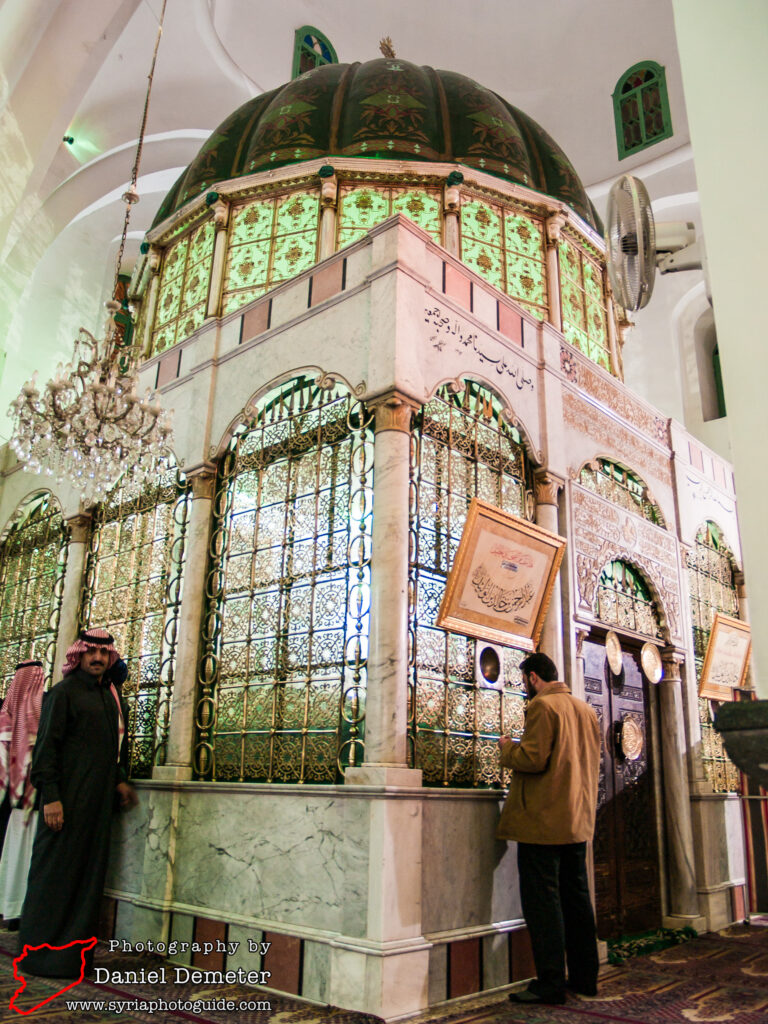
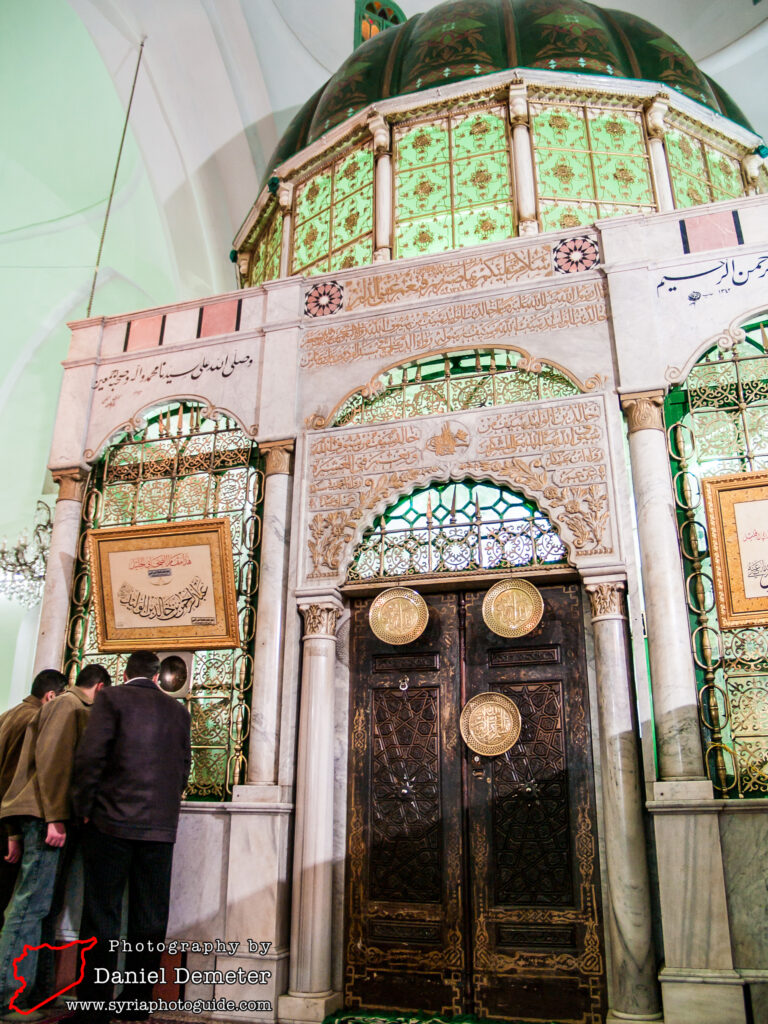
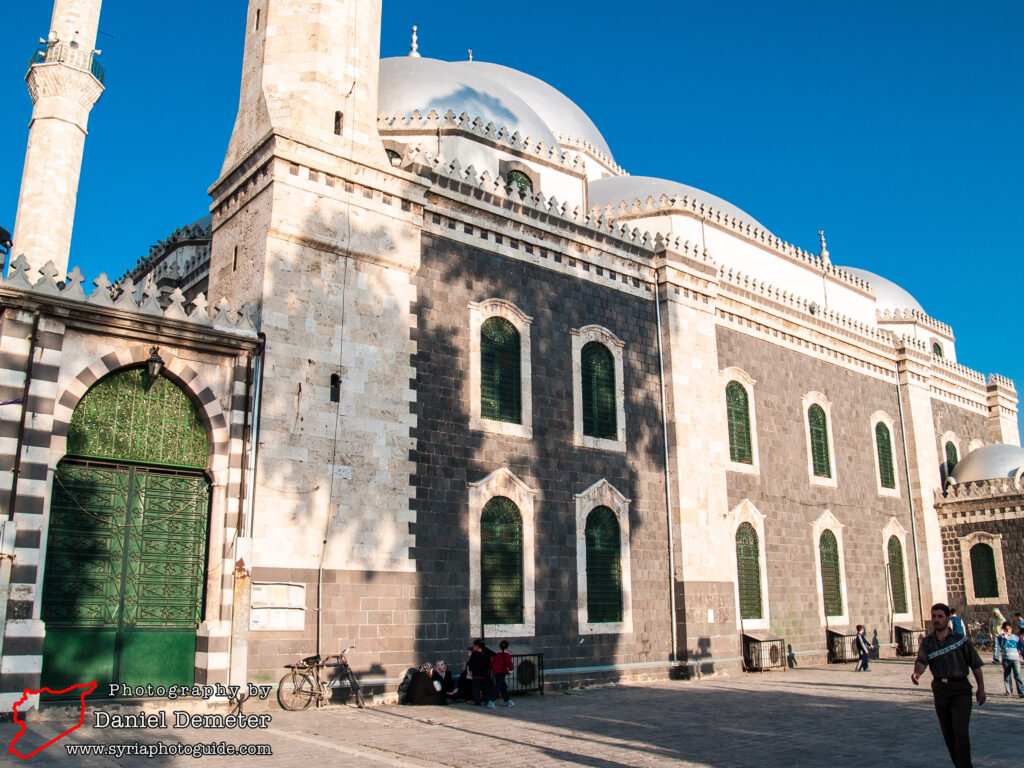
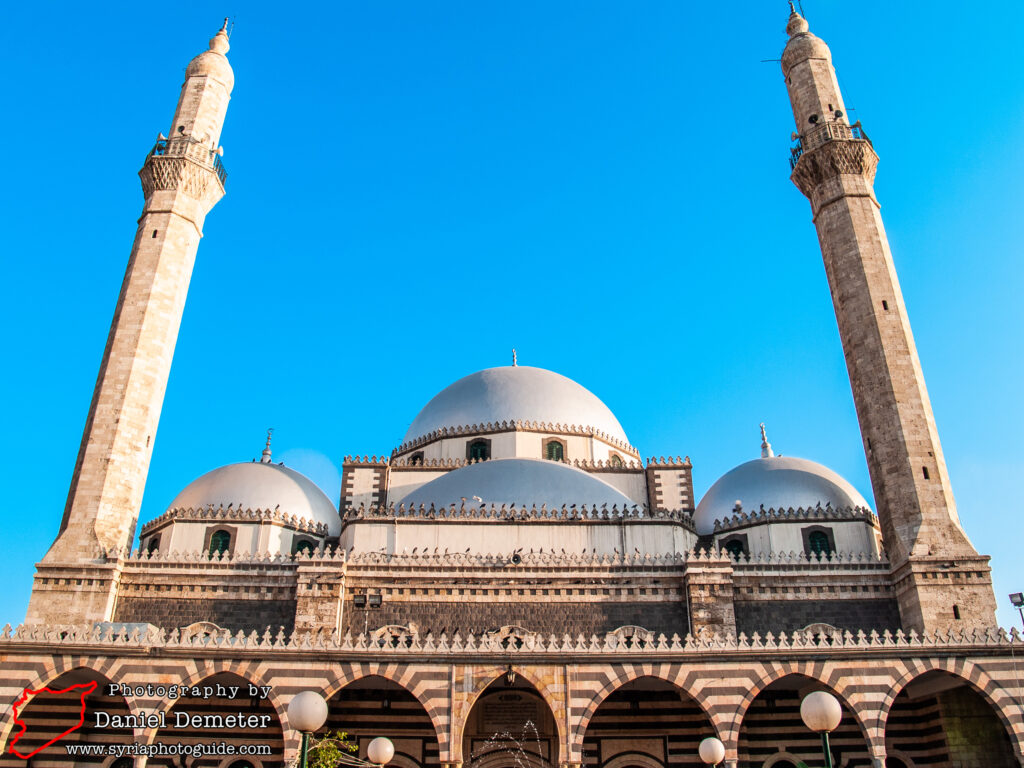
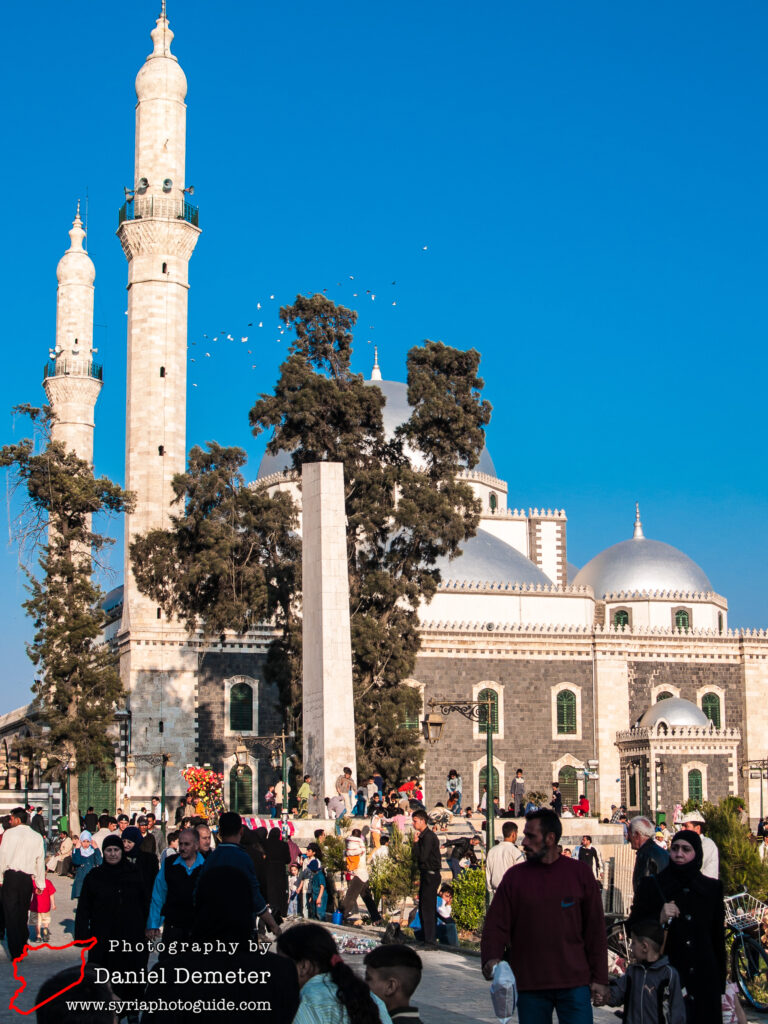
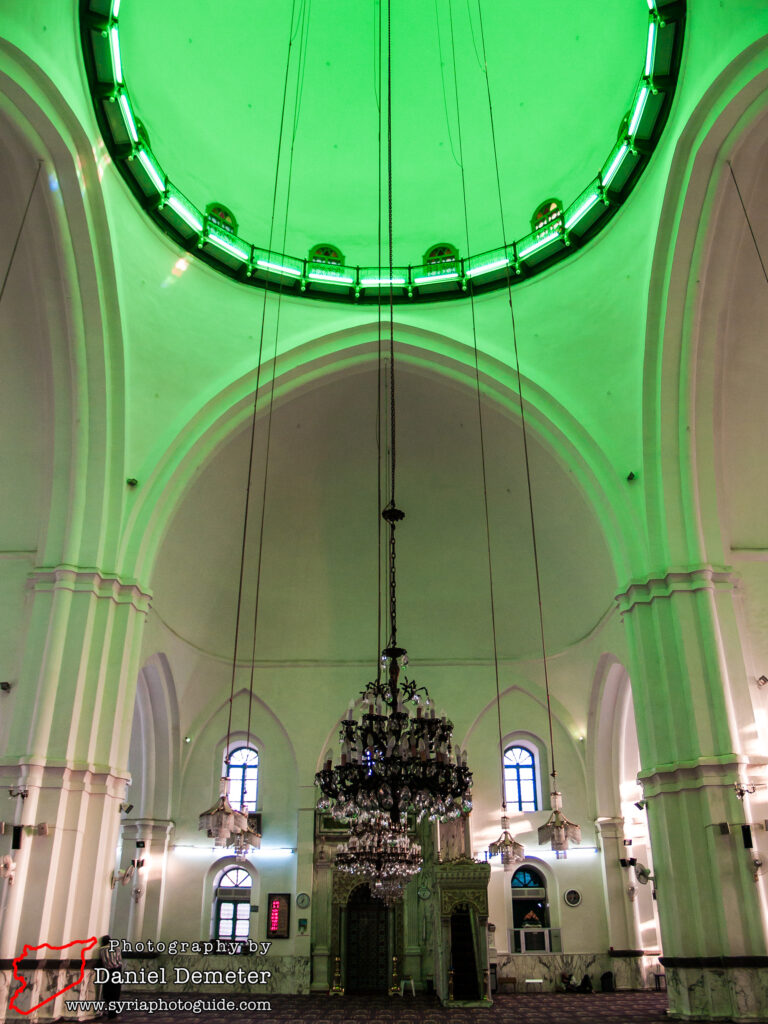
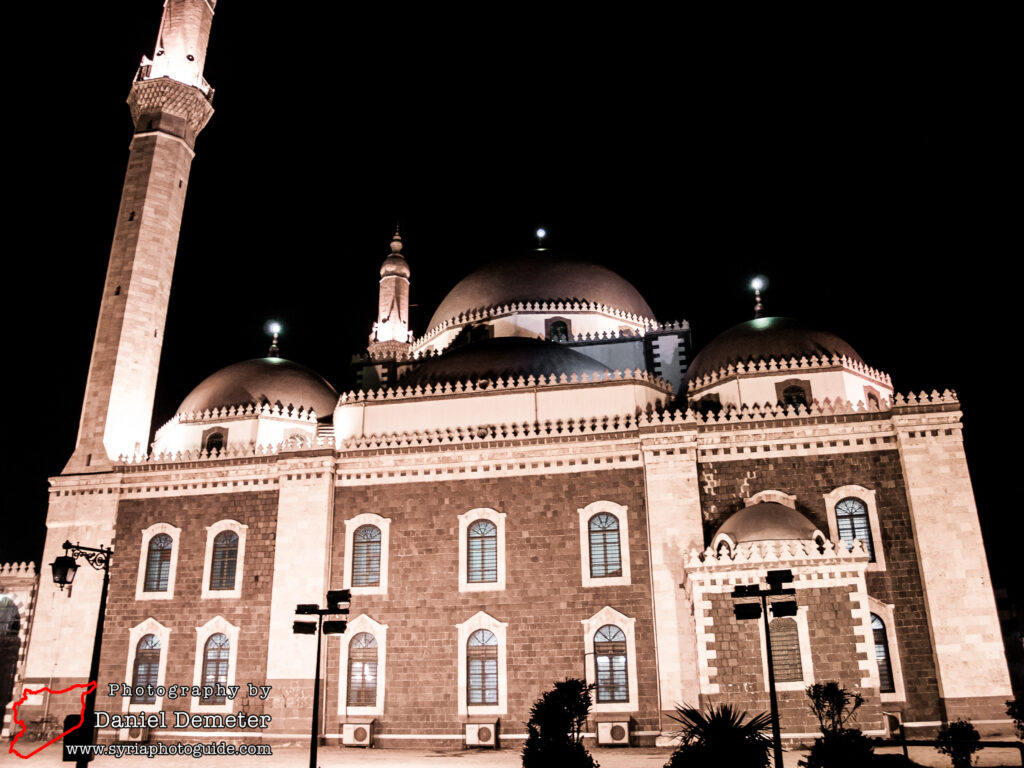
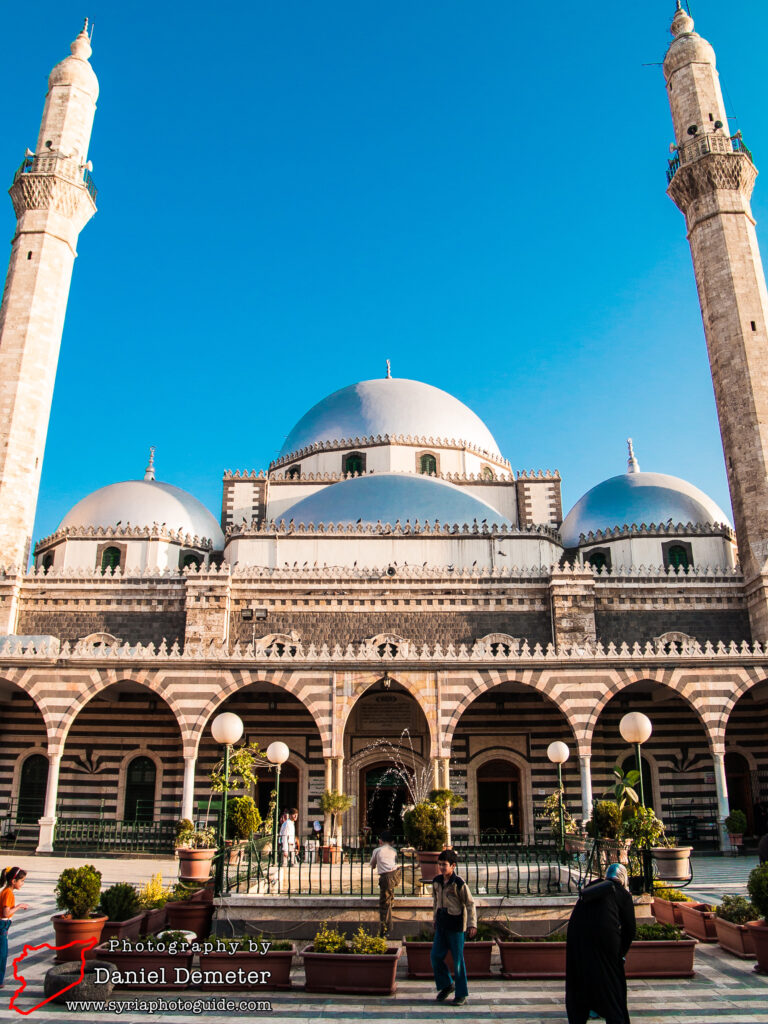
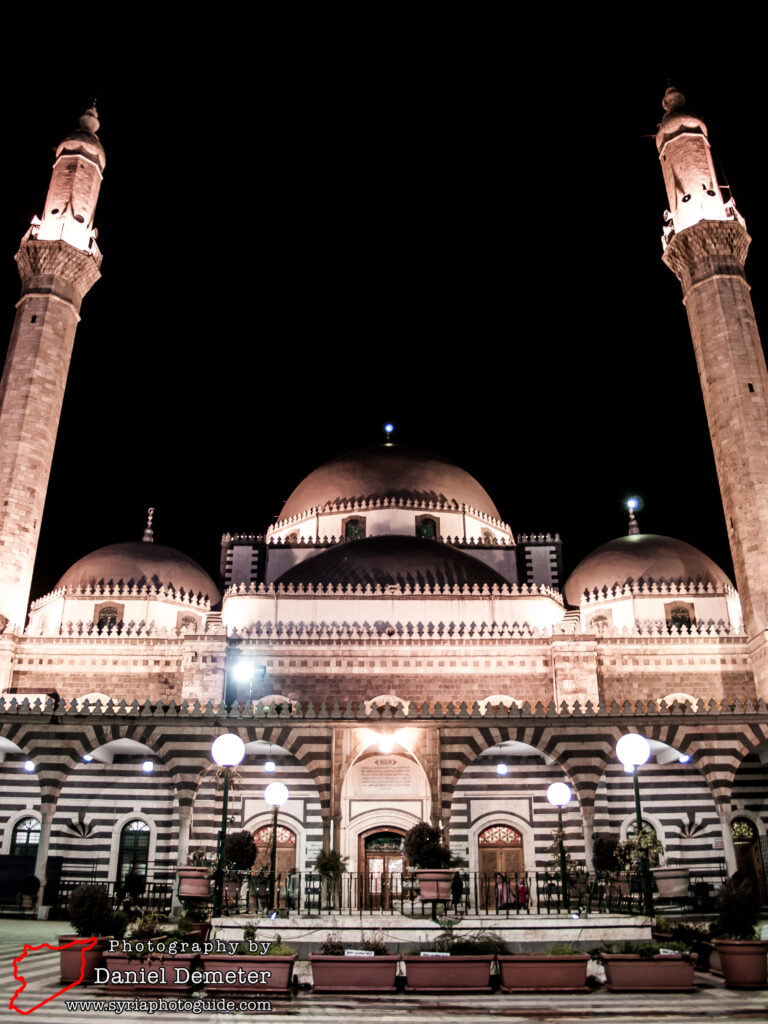
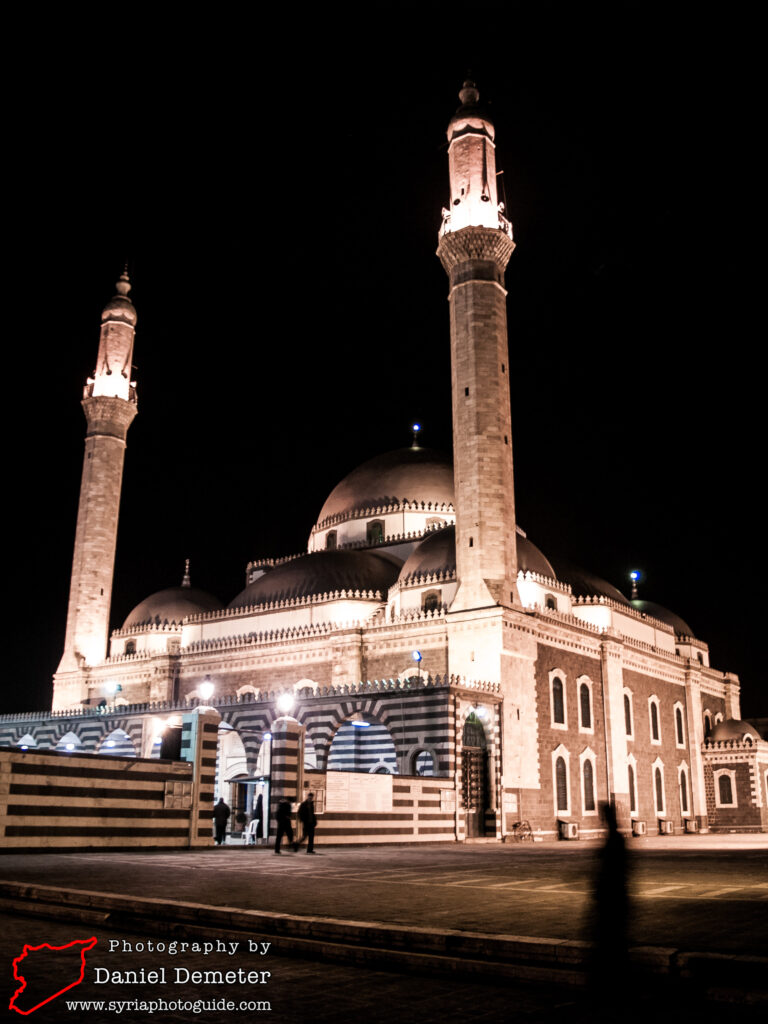
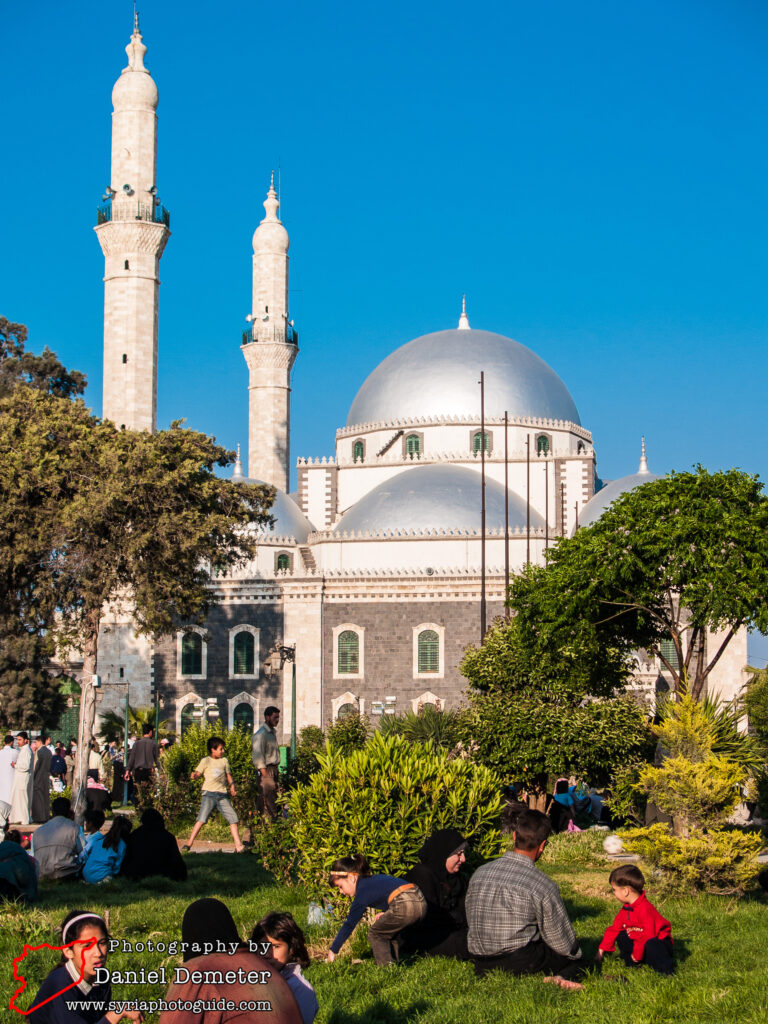
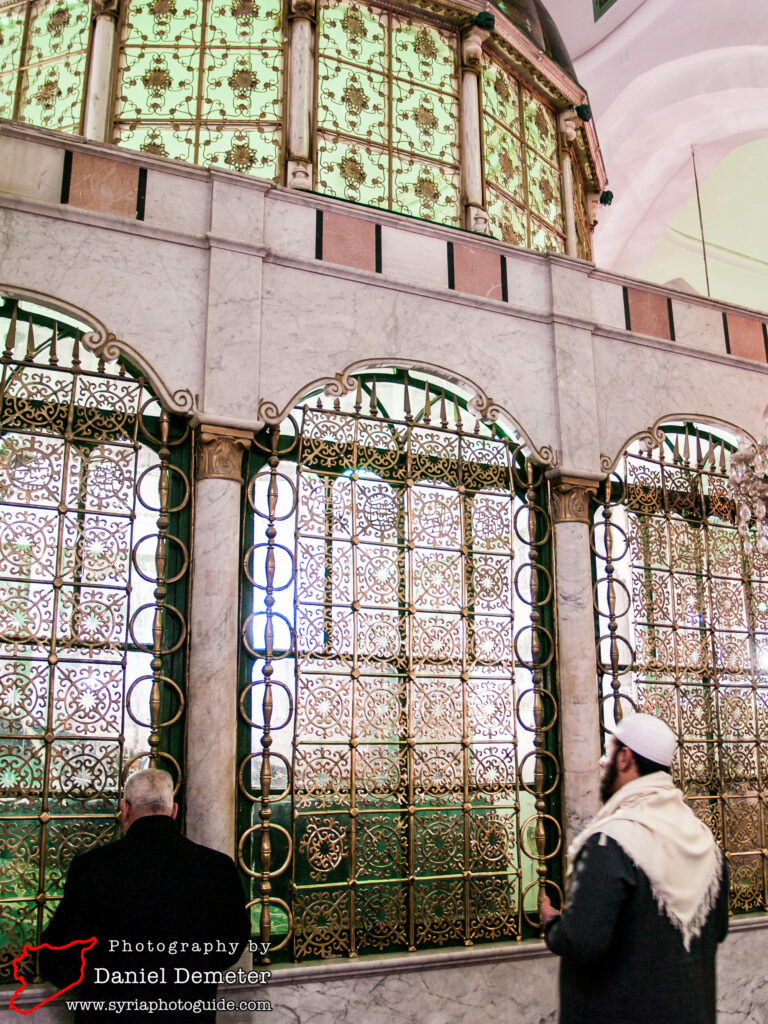
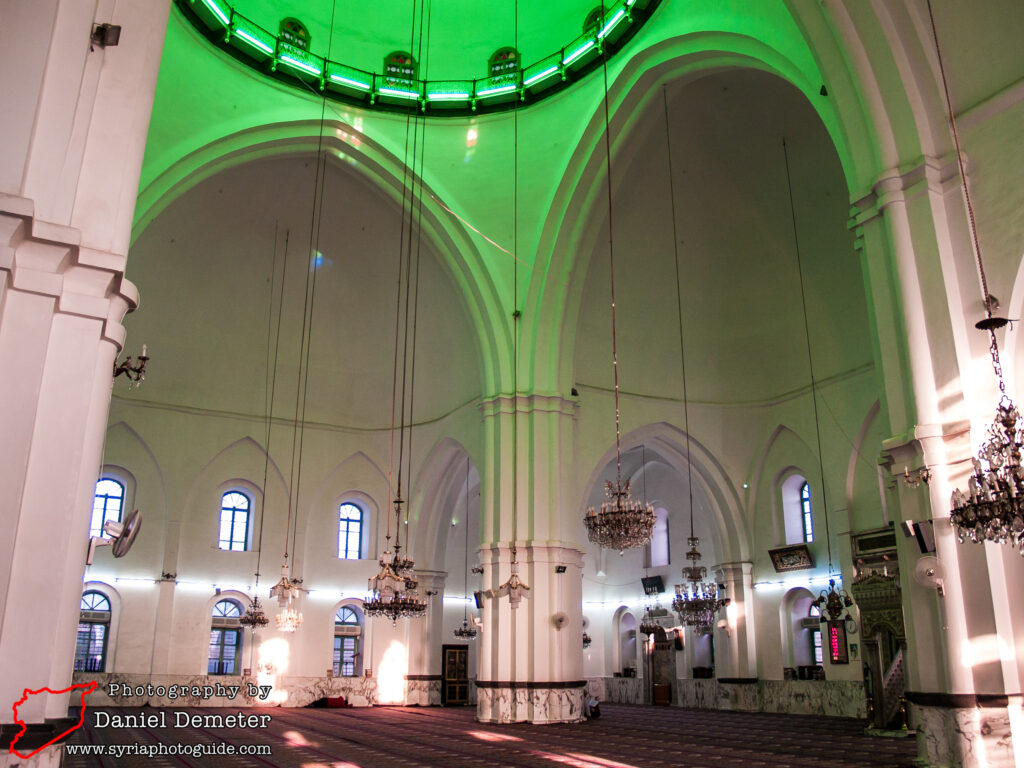
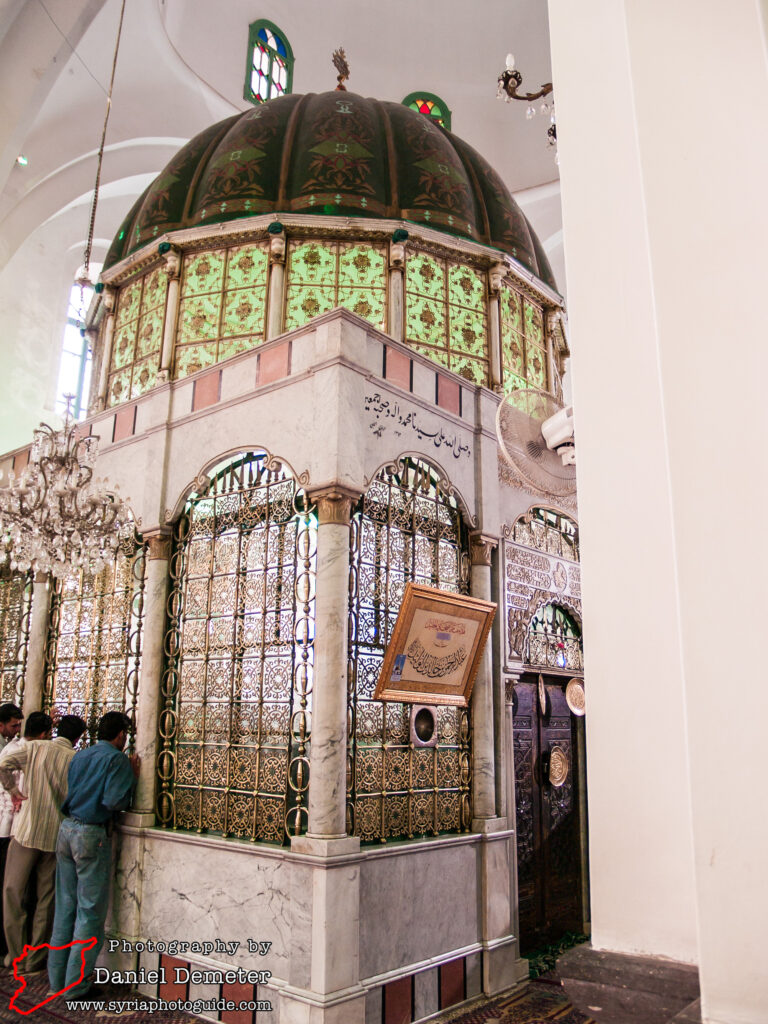
Getting There: Homs (حمص) is Syria’s third largest city and its central location means that it has regular bus connections to all major cities in Syria. Khalid Ibn al-Walid Mosque (مسجد خالد ابن الوليد) is located in the northern part of the city, approximately six hundred meters north of al-Nuri al-Kabir Mosque (جامع النوري الكبير) in the old city and one kilometer northeast of the clock tower in the city center. It located on the main street that enters the city from the north, where the major bus stations are also located.
Coordinates: 34°44’12.00″N / 36°42’57.00″E
Transliteration Variants: Khaled Ibn al-Walid Mosque
Rating: 5 / 10
